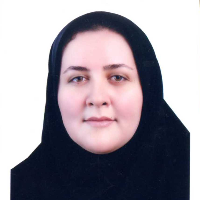Changes in Climate Indices (Ivanov, Barat, and Emberger) Due to Greenhouse Gas Emissions From Gas Flares In Ahvaz Oil Field (2008-2018)
Gas condensate flares are a crucial factor in greenhouse gas emissions. The present study aimed to investigate the global warming potential resulting from gas condensate flares in the Ahvaz oil field, Ahvaz City, Iran, and its impact on climate indices from 2008 to 2018.
This is a descriptive cross-sectional study. The information on gas flares and climate data has been obtained from the National Iranian South Oil Company (NISOC) and meteorological stations in Khuzestan Province, Iran. The emission factor of greenhouse gases due to the burning of these flares was calculated after obtaining climatic information on gas flares in the study area. The climate indices of Ivanov, Emberger, and Barat were calculated for 11 years. Finally, the relationship between climate indices and Global Warming Potential (GWP) was determined using multiple regression.
The results showed that during the research period, an average of 626831.2.2 tons of carbon dioxide (equivalent) was produced due to gas flares in one month in the Ahvaz oil field. Carbon dioxide was responsible for 90% of the global warming effect of the flares. Based on the results of calculating climate indices, Ahvaz City in the studied years was classified in the category of “semi-arid” in Barat index, “dry desert” in Ivanov index, and “semi-arid desert” and “severe desert” in Emberger index.
The results of correlation analysis between GWP and climate indices show a significant negative correlation between the values of the Emberger index and the global warming potential caused by gas flares, indicating the impact of greenhouse gases on climate change in Ahvaz. These changes have intensified phenomena such as dust and severe floods.
-
Develop of the management strategies using the new vulnerability assessment method and DPSIR model in wetland ecosystems (Case study: Lahijan Amirkalaye wetland
Sheyda Rostamifar, Seyedeh *
Journal of Natural Environment, -
Analysis of Factors Affecting the Vulnerability of Arsbaran Protected Area and Development of Management Strategies Using the DPSIR Model
Bita Baheri, *, Sahar Mokhtari
Journal of Geography and Environmental Hazards,



